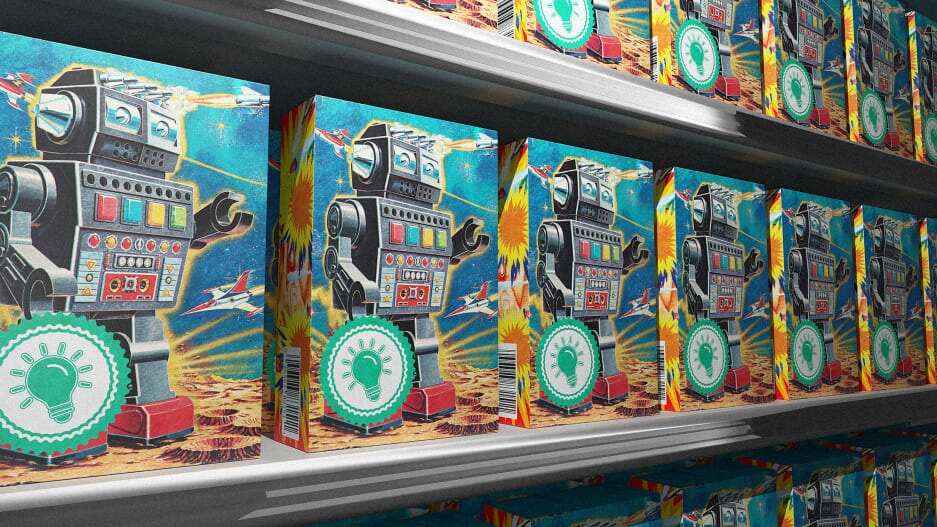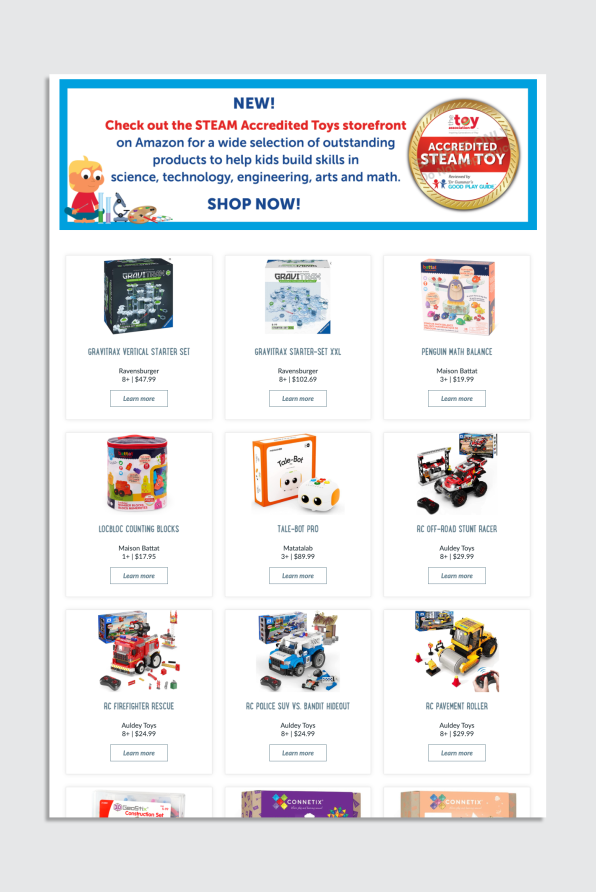- | 8:00 am
STEM toys are booming. So is ‘STEM-washing’
In a crowded market, a new accreditation program aims to show which toys are actually educational.

Seemingly overnight, and almost by necessity, toys have become teachers. The educational toy market has exploded in recent years, with some researchers estimating more than $100 billion in sales globally by 2028. The uptick is partly thanks to an acronym. STEM—for science, technology, engineering, and mathematics—has become an easy way to distinguish toys with an educational side from toys that are just meant to be fun.
Or at least it was supposed to be easy. With more and more toys labeled as offering STEM benefits, toymakers and toy buyers alike are starting to wonder where the line is drawn. Is a set of racing cars or building blocks actually educational, or are parents and kids being taken in by a widespread case of “STEM-washing”?
During the pandemic, STEM toys (and their artsy cousins, STEAM—science, tech, engineering, arts, and math—toys) became must-haves for families across the country. “With COVID and the lockdowns and everything there was a huge surge in interest and demand for these toys,” says Kristin Morency, senior adviser at the Toy Association, a trade group representing the toy manufacturers and retailers that make up a $40 billion market in the U.S. “The toy industry really did respond to that demand.”
STEM toys have a growing presence in toy stores and online, and a market that’s expected to grow by nearly a billion dollars over the next few years. Scientific toys, a subset of the STEM category, has grown 28% over the past three years to about $281 million in annual sales, according to Frédérique Tutt, a toy industry analyst at Circana. The growth is even bigger for STEM-adjacent building sets like Lego, which have grown 51% in that time, to more than $2 billion in annual sales, she says.
The era of the pandemic helped establish the STEM niche in the toy industry, but it also muddied the waters with toys inaccurately touting their educational merits. “There were so many toys every year that were claiming to be STEM or STEAM and not all of them could explain clearly what makes this toy STEM or STEAM,” says Anna Yudina, director of marketing initiatives at the Toy Association. “And even those that could explained it in different ways.”
From building blocks to toy car ramps to stomp-fired air rockets, a wide range of marginally educational toys were suddenly being sold as STEM products. Whether STEM-washing or inconsistent marketing is to blame, the confusion has led the toy industry to try to get precise about what a STEM toy is.

In response, the Toy Association created an accreditation program for STEAM toys, partnering with the Good Play Guide, a U.K.-based reviewer of children’s products founded by a child development specialist. Together they developed an assessment framework for determining whether a toy offers the educational merits suggested by a STEAM label.
To qualify, a toy must support learning goals in at least two of the STEAM categories while also having attributes like real-world relevance, active involvement, and free exploration. The program, which launched in August 2021, has accredited more than 200 toys from 60 manufacturers worldwide. Accredited toys include a Super Smile Dentist Kit Play Set, Lady Bug Land, and a Build-Your-Own Glowing LED FM Radio.
Some, like the Hot Wheels Flight Path Challenge—a looped ramp for launching toy cars through rings—may seem a bit fuzzy in terms of its educational takeaways, but Yudina says the accreditation program’s first criteria is that the toy is something a kid actually wants to play with. “If a toy is not fun or engaging, it doesn’t matter how much science, technology, or math you pack into it,” she says. “It’s not homework. Toys should be fun.”





































